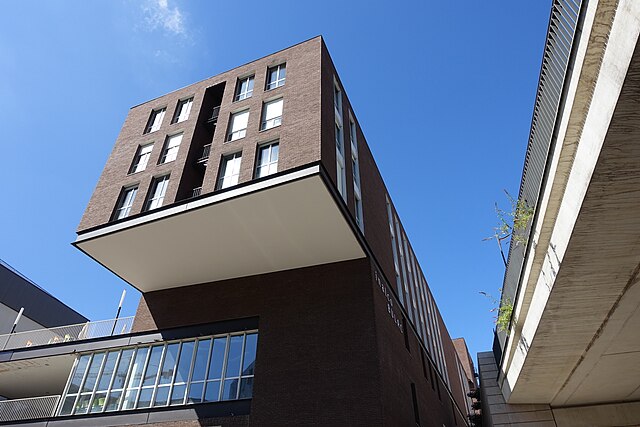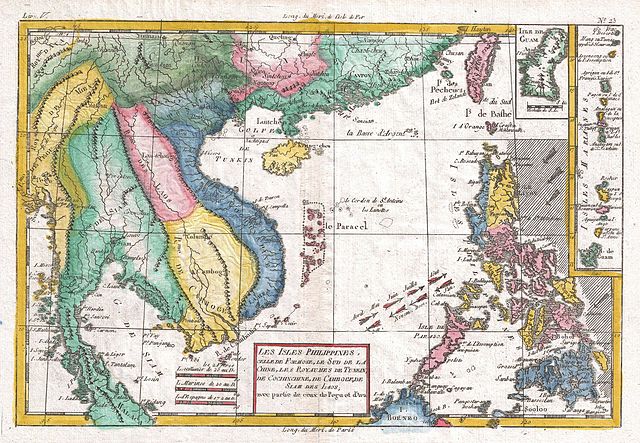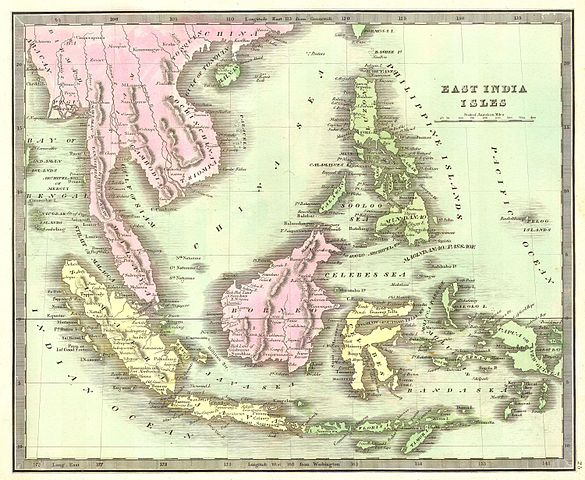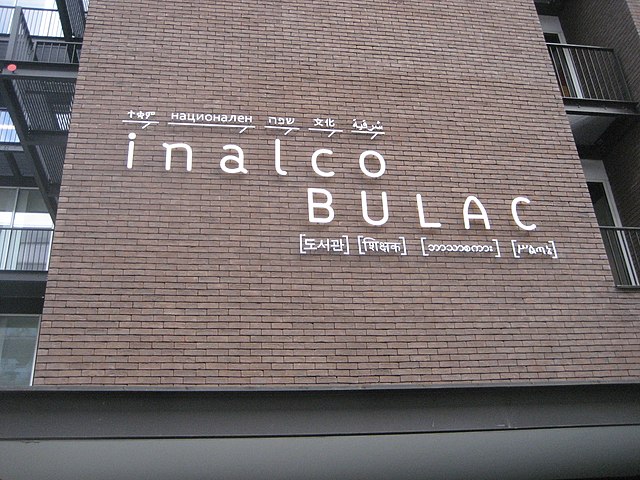On Friday December 21, the Thammasat University Library welcomed delegates from the National Institute of Eastern Languages and Cultures (Institut national des langues et civilisations orientales; INALCO), France. The group was comprised of Professor Manuelle Franck, President of INALCO, and Mr. Apisit Waraeksiri, who teaches Thai language there.
INALCO was founded in an earlier form in the 1600s by Jean-Baptiste Colbert, a French politician who served as the Minister of Finances for King Louis XIV, known as the Sun King. Colbert worked hard to improve trade, manufacturing, and the national economy. Part of his effort was training young people to be experts in the languages of countries in Asia and North Africa where France hoped to make money. Today, over 8,000 students, including around 300 doctoral candidates, are registered, learning the languages of Central Europe, Africa, Asia, America, and Oceania.
INALCO is noted for its challenging course work, especially in Japanese, Chinese, Russian and Arabic. In the Department of Japanese Studies, two-thirds of enrolled students fail in the program during the first year and again in the second year. By the third year, the departmental failure rate is reduced to just over one-fourth of students.
Thai language has been taught at INALCO since the 1800s. Among the international exchange Memoranda of Understanding (MoUs) signed by INALCO with Thai institutions of higher learning include those with Thammasat University as well as Silpakorn, Khon Kaen, Ram Khamhaeng, and Kasetsart Universities. There is also an international branch of INALCO in Singapore. Among past directors of INALCO is Professor Gilles Delouche, a noted specialist in Thai language. Professor Delouche, a scholar of classical literature of the Rattanakosin Kingdom, taught in the 1970s and 1980s at the Faculty of Arts, Silpakorn University. His teaching at INALCO has focused on introductory Thai syntax, especially Siamese versification and classical works, from their origins to the seventeenth century. He has published research on the dating and restoration of classical Siamese manuscripts, as well as the first embodiment of Siamese unity in the first part of the Ayutthaya Kingdom (1350–1656).

Professor Manuelle Franck’s main field of research is the geography of Southeast Asia, focusing on physical, human, economic, and regional geography to better understand issues arising from urbanization. She has published research on urban and regional geography as well as secondary cities in Indonesia and other ASEAN nations. Regional integration and transnational dynamics in island communities in Southeast Asia are also subjects of her work.
Making sense of city development in Indonesia, Malaysia, her publications include a chapter on population in Atlas of Thailand: Spatial Structures and Development, which is the TU Library collection, with copies shelved in the Reference Stacks of the Pridi Banomyong Library, Tha Prachan campus; Puey Ungphakorn Library, Faculty of Economics, Tha Prachan campus; and Puey Ungphakorn Library, Rangsit campus. More recently, she has co-authored a chapter on intra-urban dynamics in Penang and Surabaya in Globalization and New Intra-Urban Dynamics in Asian Cities, which may be borrowed by interlibrary loan. Her doctoral thesis was on the process of urbanization in East Java, a province of Indonesia. In a publication of INALCO named Langues O’ after the French nickname for the institute, Professor Franck wrote,
Eyes open and curious about human differences
Our institute is about meetings among all the different worlds. We are guided by a passionate interest in other peoples, their languages, civilizations, cultures, and thought as well as traditions, codes, ways of seeing and of seeing us. We are a firsthand place for intermingling. At INALCO, we teach with languages and civilizations, always extending our subjects of research. We organize and host many cultural and scientific events. We act within our scope in France and internationally. With languages, civilizations, and cultures, our ambition in Langues O’ is to share our understanding of al these worlds and bring our contribution to everyone’s intellectual curiosity. Here, with this magazine, are some keys for understanding a globalized planet where each of us is so similar and so different.
Manuelle Franck
President of the Institut national des langues et civilisations orientales

Professor Franck was accompanied for the library tour by Ajarn Apisit, a lecturer in classical Siamese culture, language, and literature. He earned a Ph.D. at INALCO with a thesis on Karma, Animism and Classic Siamese Literature. More recently, he has researched the subjects of language, beliefs and daily life in Thailand; the origin of elephants in Thai culture; and Sunthon Phu (1786 – 1855). As all Thais know, Sunthorn Phu is a celebrated royal poet who wrote in the time of the Rattanakosin Kingdom (1782–1932). The TU Library owns many books by and about him. Suthorn’s descriptions of the history of Siam have been valued internationally, and for his bicenenary in 1986, UNESCO honored his accomplishments. His national epic Phra Aphai Mani, considered to be the longest poem ever written in Thailand, tells a folkloric tale of an imaginary world where people live peacefully.
Library support
The goals of INALCO are achieved in part due to collaboration from the University Library of Languages and Civilizations (Bibliothèque universitaire des langues et civilisations; BULAC) which opened in 2011. The library collects materials about all languages and cultures which are not those of the Western World. The director of BULAC is Dr. Marie-Lise Tsagouria. The BULAC building was designed by the French architect Yves Lion. The five-storey building seats 910 readers on three floors which are open to the public. As the website of BULAC explains,
BULAC’s collections contain
- 1.5 million documents… from 180 countries in nearly 350 languages – with around 200 languages represented to a significant extent – and in over 80 different scripts.
- 2100 subscriptions to printed journals.
- With 6000 m² on three floors and 7000 linear metres of bookshelves, our reading rooms provide free access to 10% of all BULAC’s collections. Our objective is to eventually provide free access to 225,000 volumes.
- Documents available in free access are classified according to 6 geographical areas along with a general documents section classified according to 10 fields of study corresponding to different fields of knowledge.
- Over 7000 online journals which are accessible using library work stations or via readers’ portable computers.
- Numerous digital periodicals and audiovisual documents.
BULAC’s “Reserve” collection has a wealth of 10,000 rare and precious print documents and over 4000 manuscripts. Notable ones include:
- A thousand volumes in Arabic and a large number of fragments,
- 197 volumes in Turkish,
- 133 volumes in Persian,
- 55 volumes in Hebrew,
- Around 50 volumes in different Indian languages,
- Other sets of volumes in Pali, Sanskrit, Cham, Khmer, Burmese and various Indo-Chinese languages,
- Other collections in languages like Russian, Armenian, Chinese, Japanese, Malay, Lolo, etc.
- Archives and collections of correspondence…
BULAC’s primary mission is to create relevant and robust collections of books and documents, mainly in vernacular languages, on the languages and civilisations of the Balkans, Central and Eastern Europe, the Maghreb, the Near East, the Middle East, Central Asia, Africa, Asia, the South Sea Islands and native American civilizations. Linguistics, literature, history and other fields in the humanities and social sciences are among the vast disciplinary fields the BULAC covers to promote understanding of these cultural spaces. At BULAC, the concept of “languages and civilisations” covers vast disciplinary fields in the humanities and social sciences, literature and arts of all the countries concerned.

(All images courtesy of Wikimedia Commons)

